
Pierre Curie was a French physicist, a pioneer in crystallography, magnetism, piezoelectricity, and radioactivity. In 1903, he received the Nobel Prize in Physics with his wife, Marie Skłodowska–Curie, and Henri Becquerel, "in recognition of the extraordinary services they have rendered by their joint researches on the radiation phenomena discovered by Professor Henri Becquerel". With their win, the Curies became the first married couple to win the Nobel Prize, launching the Curie family legacy of five Nobel Prizes.

Sorbonne University is a public research university located in Paris, France. The institution's legacy reaches back to the Middle Ages in 1257 when Sorbonne College was established by Robert de Sorbon as a constituent college of the University of Paris one of the first universities in Europe.

Claude Servais Mathias Pouillet was a French physicist and a professor of physics at the Sorbonne and member of the French Academy of Sciences.

Horace Bénédict de Saussure was a Genevan geologist, meteorologist, physicist, mountaineer and Alpine explorer, often called the founder of alpinism and modern meteorology, and considered to be the first person to build a successful solar oven.

Charles Frédéric Gerhardt was a French chemist, born in Alsace and active in Paris, Montpellier, and his native Strasbourg.

François Sulpice Beudant was a French mineralogist and geologist. The mineral beudantite was named after him.
Georges Philippe Friedmann, was a French sociologist and philosopher, known for his influential work on the effects of industrial labor on individuals and his criticisms of the uncontrolled embrace of technological change in twentieth-century Europe and the United States.
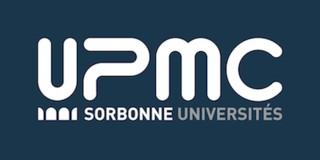
Pierre and Marie Curie University, also known as Paris VI, was a public research university in Paris, France, from 1971 to 2017. The university was located on the Jussieu Campus in the Latin Quarter of the 5th arrondissement of Paris, France. UPMC merged with Paris-Sorbonne University into a new combined Sorbonne University.

Jules Célestin Jamin was a French physicist. He was professor of physics at École Polytechnique from 1852 to 1881 and received the Rumford Medal in 1858 for his work on light. He improved Brewster's inclined interference plates with the development of the Jamin interferometer.

Alfred Mathieu Giard was a French zoologist born in Valenciennes. He served as a professor of zoology at the Faculty of Sciences in Lille. He specialized in parasitology and the genus Giardia was named after him by Johann Künstler in 1882.
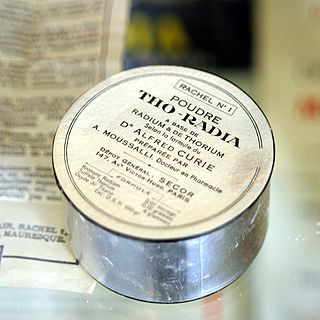
Tho-Radia was a French pharmaceutical company making cosmetics between 1932 and 1968. Tho-Radia-branded creams, toothpastes and soaps were notable for containing radium and thorium until 1937, as a scheme to exploit popular interest for radium after it was discovered by Pierre and Marie Curie, in a fad of radioactive quackery.
Jean-Baptiste-Michel Bucquet was a French chemist, member of the French Royal Academy of Sciences, physician and public teacher.
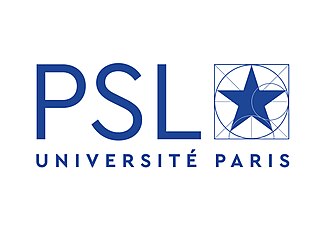
Paris Sciences et Lettres University is a public research university and Grand établissement based in Paris, France. It was established in 2010 and formally created as a university in 2019. It is a collegiate university with 11 constituent schools, with the oldest founded in 1530. PSL is located in central Paris, with its main sites in the Latin Quarter, at the Montagne Sainte-Geneviève campus, at the Jourdan campus, at Porte Dauphine, and at Carré Richelieu.
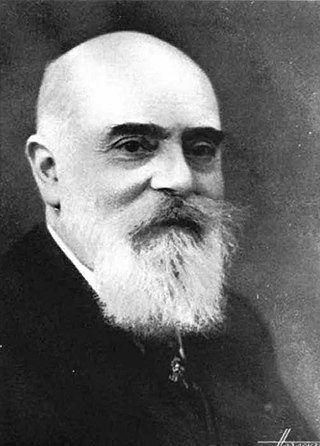
Henri Abraham (1868–1943) was a French physicist who made important contributions to the science of radio waves. He performed some of the first measurements of the propagation velocity of radio waves, helped develop France's first triode vacuum tube, and with Eugene Bloch invented the astable multivibrator. He was murdered at Auschwitz during the Holocaust.

Paris-Saclay University is a combined technological research institute and public research university in Orsay, France. Paris-Saclay was established in 2019 after the merger of four technical grandes écoles, as well as several technological institutes, engineering schools, and research facilities; giving it fifteen constituent colleges with over 48,000 students combined.
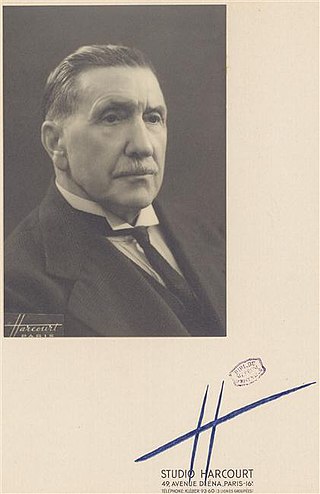
Jean Abel Gruvel was a French marine biologist known for his research of cirripedes.
Jacques Montet was an 18th-century French pharmacist, chemist and encyclopediste.

Clotilde-Camille Deflandre was a French scientist primarily known for her discovery with her mentor Paul Carnot of Hémopoïétine" (erythropoietin). She also pioneered work that led to the development of organ transplantation. She was the first woman in France to receive both a "docteur en médicine” and a docteur ès naturel sciences.
Jacques Etienne Bérard was a French naturalist, chemist and physicist.

Gustave-Augustin Quesneville was a French chemist, chemical manufacturer, and journal editor, best known for the monthly Moniteur Scientifique Du Docteur Quesneville.
















